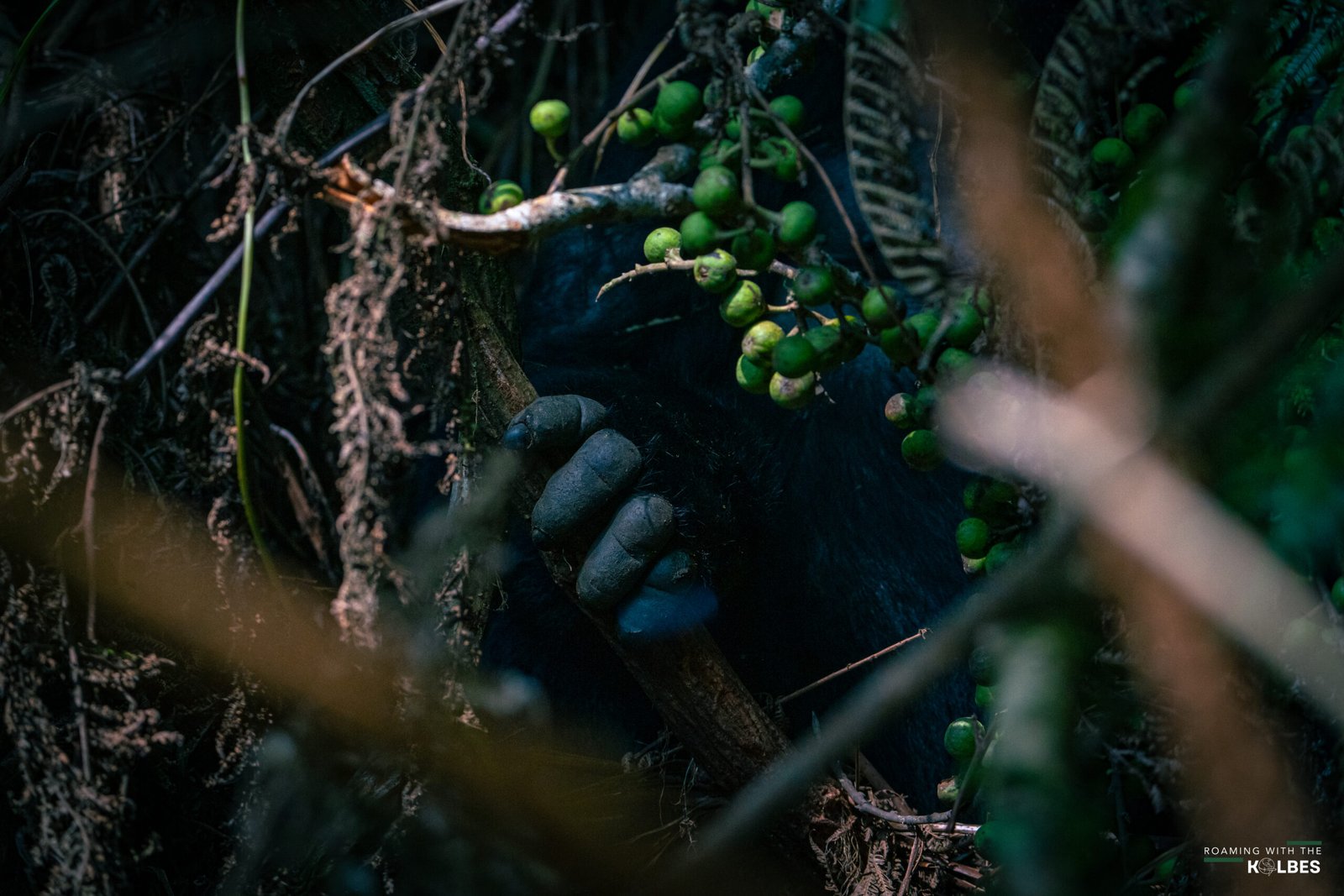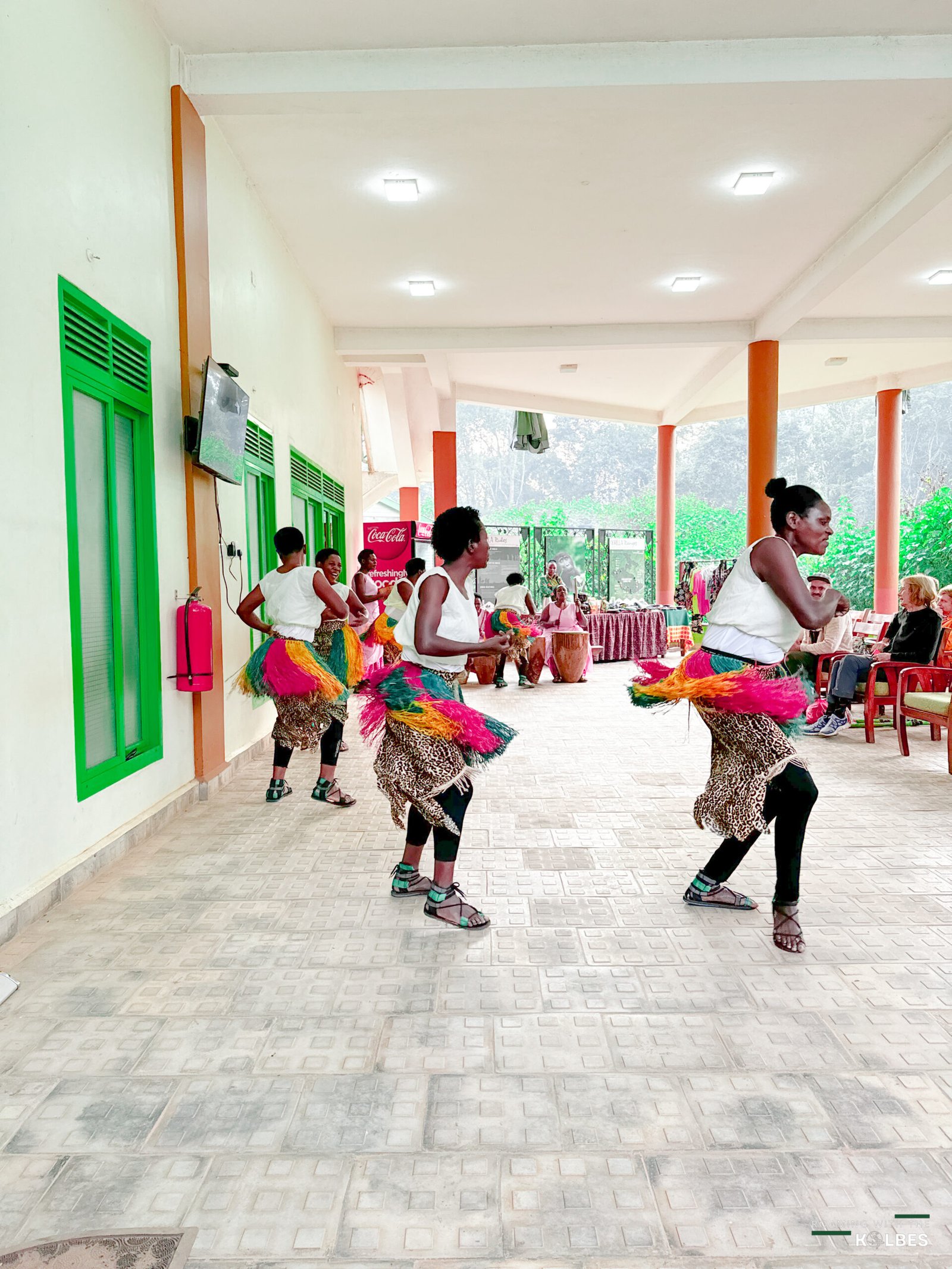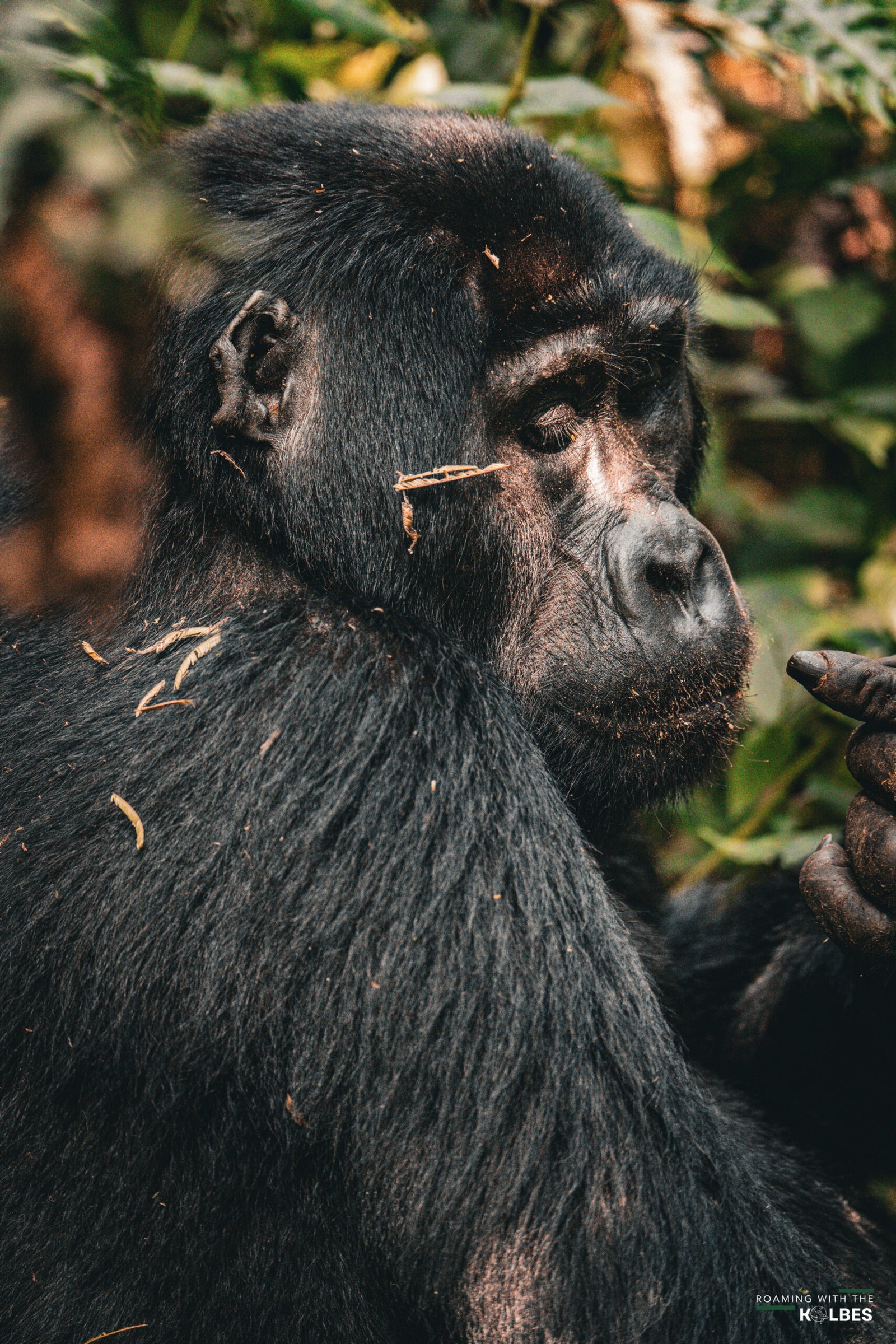[reading_time]
Your Guide to an Unmatched Wildlife Adventure in Uganda – Gorilla Trekking in Bwindi Impenetrable Forest
Imagine standing face-to-face with a majestic wild mountain gorilla in its natural habitat. Your heart races, not from fear, but from awe. The sheer presence of these gentle giants, with their deep, knowing eyes, is enough to leave you speechless. Now, imagine that this once-in-a-lifetime experience also contributes directly to the conservation of gorillas, their lush habitats, and the empowerment of local communities. Sounds incredible, right? Welcome to Uganda, the Pearl of Africa, host to your Gorilla Trekking adventure.
In this comprehensive guide, we’ll take you through every detail of our unforgettable gorilla trekking experience in Uganda. From securing those all-important permits to what to pack for the hike. Whether you’re an adventure junkie or a nature lover, this guide will prepare you for one of the most exhilarating and rewarding experiences of your life.

Gorilla Trekking Permits: Your Golden Ticket
Understanding Gorilla Trekking Permits
Securing your gorilla trekking permit is the first and most crucial step in planning your adventure. Without it, you cannot participate in the trek. Only 8 visitors can join each gorilla family group, making these permits highly sought after due to the limited daily availability.
While trekking, our guide, John, shared that Bwindi Impenetrable Forest has about 50 gorilla families. Out of these, only 25 are habituated for tourism, allowing visitors safe and respectful encounters
Permit Options and Pricing
There are two main types of permits:
- Standard 1-Hour Permit: Priced at $800 per person, this permit allows you one hour with a gorilla family. It’s sufficient to experience the magic of these incredible creatures.
- Gorilla Habituation Permit: For $1,500 per person, this permit provides up to four hours with a gorilla family undergoing habituation. This is ideal for those who wish to delve deeper into the conservation efforts.
The cost of activities mentioned above were extracted from the latest information available on the Uganda Wildlife Authority (UWA) Official Website.
We opted for the standard 1-hour permit. The total cost, including the administration fee, was $840 per person. According to the UWA website, you can only book your permit through a licensed tour operator. We secured our permits through Wild Frontiers Uganda Safaris, and their representative, Carla, was exceptional in facilitating the process. We highly recommend contacting her to help you arrange your Gorilla Trekking experience in Uganda.

Getting to Bwindi Impenetrable Forest for your Gorilla Trekking Adventure
The adventure doesn’t just begin when you spot your first gorilla; it starts the moment you set foot in Uganda. After landing at Entebbe International Airport, you have two main options to reach the Bwindi Impenetrable Forest: driving or flying.
The costs and options detailed in this guide are based on our personal research and the quotes we received while planning our gorilla trekking adventure. To ensure you have the most accurate and up-to-date pricing and information for your travel dates, please refer to the official websites linked below.

Option 1: Flying from Entebbe to Kisoro Airstrip
Cost and Booking: A round-trip flight with Aerolink costs approximately $564.40 per person, totalling $1,128.80 for two people. This option is the fastest way to reach Bwindi, allowing you more time to enjoy the forest.
Flight Schedule:
- Entebbe to Kisoro: Morning flights at 07:00 and 10:15.
- Kisoro to Entebbe: Return flights at 08:45 and 11:45.
Baggage Policy:
- Checked Baggage: Maximum of 15 kg for soft-sided bags. Dimensions must be 60 cm x 45 cm x 33 cm. Hard shell cases are not allowed.
- Carry-on Baggage: Included in the 15 kg total. Size limit: 30 cm x 53 cm x 23 cm.
- Excess Luggage: Additional freight seat for up to 75 kg of luggage can be booked in advance. Aerolink also offers luggage storage at $5 per night per bag.
Further Information:
Transfer to Bwindi: Upon arrival at Kisoro Airstrip, arrange a taxi transfer to Bwindi. The drive takes about 1 hour and 20 minutes, costing approximately $600 round-trip. Booking this service in advance is recommended for a seamless journey.
Option 2: Driving from Entebbe to Bwindi Impenetrable Forest
If you’re like us and enjoy the scenic route, the drive from Entebbe to Bwindi is an adventure in itself. We opted for this option because it was much more cost-effective than flying, offered the chance to experience Uganda’s diverse landscapes, and came with no luggage restrictions.
Journey Duration: The journey takes approximately 10 – 11 hours, depending on traffic and how many stops you make.
Cost and Flexibility: We chose Uganda Car Rental Services for their round-trip package, priced at $700 for two people—a deal we found quite reasonable. The package also allowed us to pay only after they picked us up from our accommodation at the end of our journey. This arrangement gave us peace of mind, as trusting online services and paying advance fees from afar can be challenging. Knowing that we would only need to settle the payment upon our return to Entebbe provided significant reassurance.
Route Highlights: Our driver was incredibly friendly and knowledgeable and we loved the flexibility of being able to stop whenever something caught our eye. A memorable stop is at the equator line, where you can witness the Coriolis effect—a fascinating demonstration for first-time visitors.
We also had the chance to visit a few other local stops along the way, which added a cultural element to our trip that we wouldn’t have experienced otherwise.
Alternative Driving Service: While our research revealed several companies offering similar services, Uganda Car Rental Services emerged as the most affordable option. We received quotes as high as $1,200 for a round-trip for two people from other providers.
Initially, we had planned to fly and conducted extensive research; however, upon discovering the luggage limitations and cost difference, we decided to drive instead. This decision was made with our personal budget considerations in mind. Therefore, it’s important to choose the option that best suits your budget and preferences.
Preparing for the Trek: What to Expect
The day of the trek has finally arrived, and the excitement is palpable as you gear up for one of the most exhilarating experiences of your life. The day begins early—very early. After enjoying a hearty breakfast at your lodge, you’ll receive all the necessary gear, including gaiters, walking sticks, and a backpack with packed lunches and refreshments.
It’s important to note that the provision of gear may vary from lodge to lodge. In our group, some participants came from lodges where additional gear was not provided, highlighting the need to choose your accommodation wisely.
We stayed at Buhoma Lodge, and they had everything we needed. We were grateful for the staff at the lodge who treated guests like royalty during the morning prep for the gorilla trek.
Our guide picked us up at 7 AM sharp and drove us to the Gorilla Visitors Centre, where the adventure truly began.
At the Gorilla Visitors Centre

Our day started with a warm welcome at the Gorilla Visitors Centre. We were greeted by a traditional dance performance by the ladies from the local community, which set a vibrant tone for the day.
A ranger briefed us on the trek rules, stressing the importance of following them to ensure a safe and enjoyable experience. This briefing covers how to behave and what to do while in the forest with the gorillas.
A key point was to avoid making direct eye contact with the gorillas. Although this can be challenging during an encounter, as their gaze naturally draws you in, it’s crucial to look away in those moments. Despite this, we were fortunate to capture some incredible moments, locking eyes with the gorillas through our camera lens.
The Trek Experience
The trek duration and terrain can vary significantly. Some groups may hike for several hours, while others, like us, encountered the gorillas within just 30-45 minutes. The moment we spotted a gorilla family was nothing short of magical. We observed a silverback, juveniles, and a female with her infant. Witnessing their interactions felt like stepping into a wildlife documentary—only this time, we were the ones behind the lens.
The juveniles played and tumbled like children, while the silverback vigilantly watched over his family. This experience served as a humbling reminder of nature’s delicate balance and the remarkable intelligence of these creatures, who share approximately 98% of human DNA. Seeing these gentle giants engage in their daily activities—eating, playing, fighting, and even mating—was truly incredible.
One of the standout moments for our group was witnessing a silverback mating, a rare event according to experts. John, our guide ranger, shared that in his eight years of tracking gorillas, he had only seen a silverback mate a few times. It was an extraordinary moment that highlighted the rarity and significance of our encounter.
Interestingly, we had expected the gorillas to be much larger. While they are undeniably impressive, movies like Mighty Joe Young and King Kong may set unrealistic expectations. Although there could be larger gorillas, the ones we encountered were not as immense as we had imagined. In retrospect, this was likely a blessing; had the gorillas been even bigger, the experience might have felt more intimidating than enjoyable.
As we trekked back to the Visitors Centre, our hearts were full, and our minds were racing. The experience left us with a newfound respect for gorillas and the efforts being made to protect them.
Our gorilla trekking experience was more than just a hike; it was a journey into a world few are fortunate enough to see.
Hiring a porter to support you through your Gorilla Trekking adventure: Supporting the Local Community
We can’t recommend this enough. For an additional $20 per person, a local porter will carry your gear, help you navigate the tricky terrain, and offer support whenever you need it. We each had our own porter, and they were very helpful for the trek.
Hiring a porter is also a way to give back to the local community, providing them with valuable employment and income.

What to Wear and Bring: Essential Gear for the trek
Gorilla trekking isn’t just about the experience—it’s also about being prepared. What you wear can make a big difference in how comfortable you are during the trek
Clothing and Footwear
- Footwear: Your choice of shoes is critical. While hiking boots are ideal, we found that sturdy sneakers worked just fine. The most important thing is that your shoes have a good grip, as the trails can be slippery, especially after rain.
- Clothing: Long trousers and long-sleeved tops are a must. Not only do they protect you from the sun, but they also keep you safe from insects and thorny bushes. Neutral colours like khaki, green, or brown are recommended, as they help you blend into the natural surroundings.
- Layers: Bwindi’s weather can be unpredictable. It’s best to dress in layers that you can easily add or remove depending on the temperature. We started our trek in light jackets but quickly shed them as the day warmed up.
- Extras: A wide-brimmed hat is a good idea to protect your face from the sun. Don’t forget a small backpack to carry your essentials—water, snacks, sunscreen, and insect repellent. The gators provided by Buhoma Lodge were a lifesaver, keeping our legs clean and dry as we trudged through muddy patches.
In the end, comfort is key. The last thing you want is to be distracted by ill-fitting clothes or sore feet when you’re standing in the presence of a mountain gorilla.

Where to Stay: Comfort and Convenience

Choosing the right accommodation enhances your gorilla trekking experience. After your trek, you’ll want to relax and unwind.
Buhoma Lodge
Nestled within Bwindi Impenetrable Forest, Buhoma Lodge combines comfort with rustic charm. The spacious cabins, each with a private balcony, offer breathtaking views of the forest. After a long trek, unwind with a hot shower and complimentary full body massage. Savour a cup of Ugandan coffee on your balcony or If you prefer something cold, you can choose from popular favourites at the fully stocked bar or sample one of the five local beers available.
The communal dining experience at Buhoma Lodge is a highlight. Guests share hearty meals and recount their adventure stories, making for a memorable evening.
Stay tuned as we will soon be sharing an article highlighting our experience at Buhoma Lodge. We’ll dive into what makes this lodge a standout option for those looking to combine a unique safari experience with the comforts of home. From the warm hospitality to the immersive forest views, our upcoming article will provide insights into why Buhoma Lodge should be on your list for your gorilla trekking adventure in Bwindi Impenetrable Forest.
Budget-Friendly Alternatives
For budget travelers, Bwindi offers a range of accommodations from campsites to guesthouses, ensuring options for every budget.
Best Time to Go Gorilla Trekking
Our trek in early July 2024 was ideal, coinciding with Uganda’s dry season. Dry conditions made the trails less muddy and the experience more enjoyable. The weather was clear, and temperatures were moderate, enhancing our trek.
Seasonal Considerations
The best time for gorilla trekking is during the dry seasons from June to September and December to February. Booking in advance is crucial during these peak months to secure your permits.

Final Thoughts: A Life-Changing Experience
Gorilla trekking in Uganda is more than just a bucket-list adventure—it’s a life-changing experience. The opportunity to observe these incredible animals in their natural habitat, while contributing to their conservation, is something that will stay with you forever.
As we left Bwindi, we couldn’t help but feel a deep sense of gratitude for the experience. The memories we made, the people we met, and the things we saw will be with us for a lifetime.
If you’ve ever dreamed of seeing gorillas in the wild, Uganda is the place to do it.

5 Tips for Planning Your Gorilla Trekking Adventure
- Uganda Visa: Check whether you require a Uganda visa to enter the country. The visa is done online, costs $50 per person and takes approximately 2 – 3 days to process.
- Book Your Permits Early: Permits are limited and in high demand. Secure yours as far in advance as possible.
- Choose the Right Time of Year: Dry seasons (June to September and December to February) offer the best conditions.
- Prepare for the Trek: Choose the right accommodation. Arrange your transfers from Entebbe to Bwindi. Pack functional clothing. Prepare your body for the increase in altitude. Ensure that you are healthy for the physical demands of the trek.
- Respect the Gorillas: Follow all guidelines to ensure safety for both you and the gorillas.
- Hire a Porter: It supports the local community and enhances your trek experience.

Helpful Resources to help you plan your Gorilla Trekking Safari
- Gorilla Trekking Permits – Licensed Tour Operator: info@wildfrontiers-uganda.com
- More Information about Gorilla Trekking and Other Wildlife Experiences in Uganda: Uganda Wildlife Authority
- Accommodation: Buhoma Lodge
Representative: Carla Laan
Email: carla@wildfrontiers-uganda.com
- Car Transfers: Uganda Car Rental Services
Before setting off on your gorilla trekking adventure in Uganda, it’s crucial to know the visa requirements, especially if you’re traveling from South Africa. We learned this the hard way! After missing our flight from Kenya due to not securing a visa in advance, we found ourselves pleading with an immigration officer at the airport to process our application on arrival. It was a nerve-wracking experience we wouldn’t wish on anyone. Don’t make the same mistake—read the full story and our guide on Uganda visa requirements for South Africans to ensure your trip starts on the right foot.
Did you find this guide helpful? if so, bookmark for later and share with anyone that needing inspiration for their next exciting adventure!
Until our next post, keep #roamingwiththekolbes
With love and appreciation,



